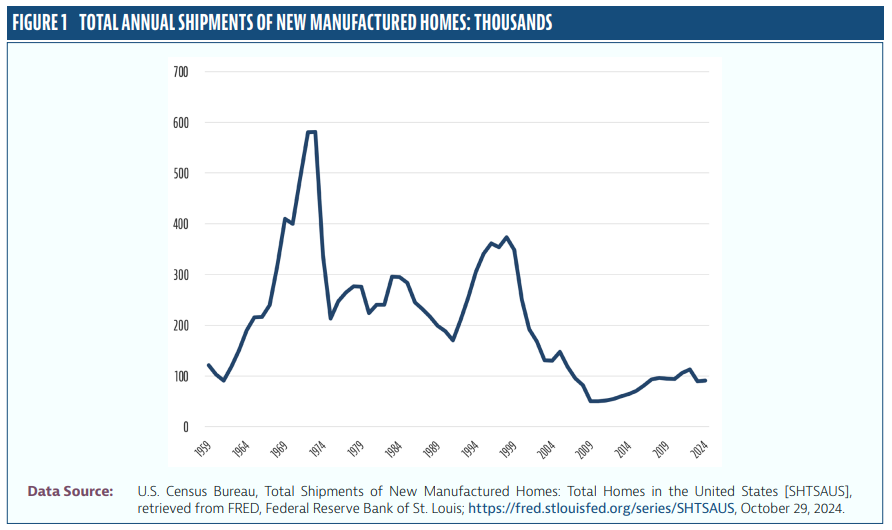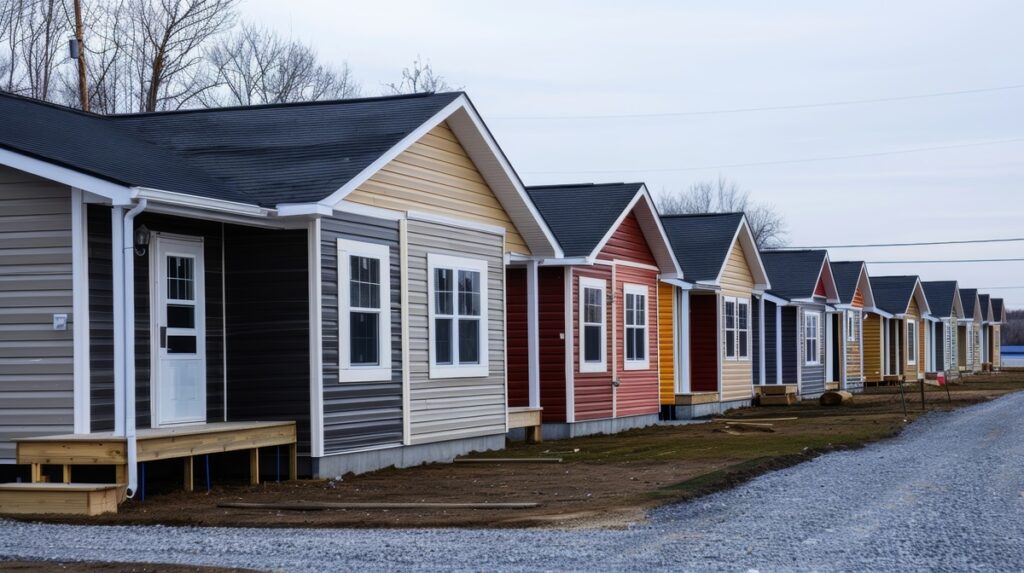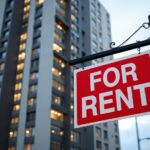Manufactured homes have been unfairly stigmatized in the past, but there’s no argument that they are a source of high-quality, relatively low-cost housing, especially in rural areas. Unfortunately, most lenders offer mortgage loans only when secured by both the home and the underlying property—difficult criteria to meet in a category where most consumers lease their homesites. FinRegLab analyzed this situation in a new report to see how automating and updating federal insurance programs to make them “home only” might ease some of the strain of the affordable housing crisis.
While the Federal Housing Administration (FHA) and Ginnie Mae have been restarting an insurance program that shares some risks of default with home-only lenders, there’s a snag: this program requires manual, paper-based procedures and imposes special requirements on participating lenders. That’s quite different from federal mortgage insurance programs that allow automated underwriting of both manufactured and site-built homes for lower-income borrowers.
“Increasing access to affordable home-only loans is an important strategy for addressing the housing crisis,” said FinRegLab CEO Melissa Koide. “But mortgage lenders are sensitive to costs and specialized requirements. Modernizing systems, filling data gaps, and harmonizing across different federal insurance programs can help attract more lenders to this vital market.”
FinRegLab’s report is based on interviews with about 20 experts, including researchers, advocates, and experienced lenders. It also includes interviews with lenders in the federal insurance program who do not offer home-only loans, but said they would be interested in doing so if there were further modernization and harmonization of the home-only insurance program (known as the FHA Title I program).

Key Findings of the Report
- Many lenders are reluctant to participate in the federal home-only insurance program due to its paper-based procedures and manual underwriting processes: Lenders are skittish about the costs, errors, and compliance risks in the manual processes to determine if a loan qualifies for FHA insurance—and that’s after other aspects of the program were improved last year.
- Many lenders feel the best-case scenario is the development of an automated scorecard paired with a broader harmonization of the rules between the home-only and mortgage insurance programs: Differences in loan documentation, allowable fees, and other requirements between the two programs create complications and disincentives to participate, which frustrates lenders. At the least, lenders would like to see the less important distinctions be harmonized to match the mortgage program.
- Lack of performance data on recent loans makes it difficult for individual lenders and secondary market investors to participate in home-only lending: New originations in the home-only insurance program shrank to zero in recent years, meaning there is little publicly available data for potential market entrants to forecast risk and performance. The creation of a more robust secondary market would give lenders more confidence in beginning to make home-only loans.
FinRegLab’s report highlights the potential benefits of prioritizing resources within FHA for automation of the home-only insurance program and harmonization with mortgage loan programs, as well as broader efforts by the U.S. Department of Housing & Urban Development (HUD), the Federal Housing Finance Agency (FHFA), and government-sponsored entities (GSEs) Fannie Mae and Freddie Mac to encourage pilot projects and other initiatives to facilitate access to performance data on recent loans.
At a higher level, the report suggests that federal agencies could have a great impact on helping to dispel stakeholders’ concerns and misperceptions about the quality of manufactured homes, the riskiness of manufactured housing borrowers, and the federal government’s commitment to engaging with the home-only market.
Click here for more on the report, “Modernizing Manufactured Home Financing: Data, Automation and Program Improvements to Scale Affordable Home Ownership.”






